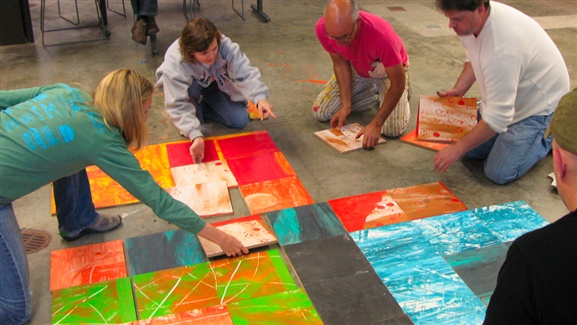Two Institutions’ Approach to Reawakening Inventiveness
Date
A course offered by Northwestern University’s Farley Center for Entrepreneurship and Innovation at the McCormick School of Engineering in partnership with the School of Communications MS in Leadership for Creative Enterprises program.
NUvention: Arts uses lectures, case studies and guest speakers to give students a first-hand look at what it takes to start a creative arts company in an age of digital disruption. Culminates in a team project that asks students to create and pitch an arts-minded business idea.
With digital technology changing the interaction with and consumption of the arts, and with entrepreneurship on the rise, this course is giving students the ability to develop successful businesses in which an artistic component is the helm.
Theatre student, Elizabeth Hunter, who used the course to re-work her approach to her educational video game on Shakespeare’s Macbeth titled, Something Wicked, says “It was super valuable for me to be in an environment where the goal is not deconstruction, but construction.” Hunter worked alongside MBA and other masters-level students in the course, being tasked with creating, rather than critiquing.
Ahren Alexander knew early on in his Northwestern career that he was interested in entrepreneurship. The engineering major also had a keen interest in music. “We Skyped in with Beyonce’s manager, the CEO of Pandora, the lead singer of Train. It was awesome,” Alexander said. “There was also an opportunity to chat with entrepreneurs in the area, around Chicago. It was just phenomenal. That’s something I think is extremely important with entrepreneurship – being able to make those kinds of relationships.”
An artist-led professional development program at the contemporary art center and urban artist residency program McColl Center for Art + Innovation.
The Innovation Institute has a professional facilitator with a background in organizational coaching and creative development join an artist to lead participants, business leaders, in exercises around unlocking creativity, encouraging risk-taking, and stimulating imaginative thinking. The sessions begin with the artist talking about his or her work and creative process. The artists then lead the participants through a series of experiences where they are making, sharing, presenting, critiquing and discussing art.
This pushes participants outside their comfort zone. “By having them participate in the creative process, they gain a visceral understanding of the fact that for every piece of art they see on the wall of a gallery, there are probably 40 other pieces that were failures that nobody will ever see,” says artist and program instructor Susan Harbage Page.
Fabi Preslar, president at SPARK Publications, a design firm specializing in custom-published books, magazines, and catalogs, attended the Innovation Institute. In the months before she attended, she had been feeling burnt out. “Just to hear how these artists find inspiration in their everyday experiences helped reawaken my creativity,” says Preslar. With her new perspective, she was able to make
the bold decisions needed to reinvigorate her business. Her company’s revenue jumped 118 percent in the year after her graduation and then rose another 19 percent the following year.
Bob Hambright, Division President at Centex Construction, sent his executive team to the institute. One of the Centex executives ended up coming back with an idea for a bold new HR model for how the company should hire, retain, and develop its people. “To me, the Innovation Institute ended up being a good way to stretch people’s minds. I think that spending time with right-brained artists and participating in these art activities helped them appreciate people with different skills from their own. Their time at the Institute helped them appreciate the importance of creativity in finding the best business solutions.”
More about the institute in the pARTnership Movement essay on fostering critical thinking.

Four people placing large colored tiles on the ground






